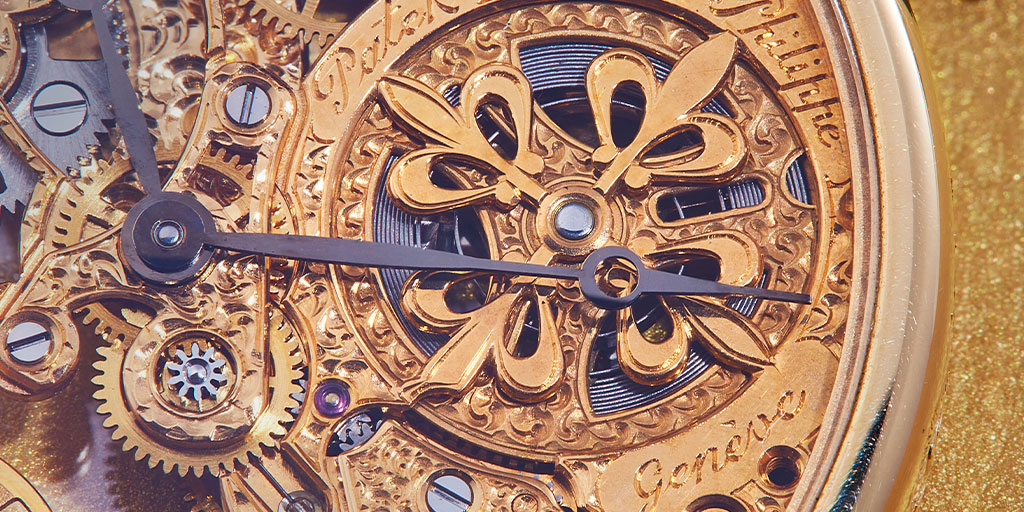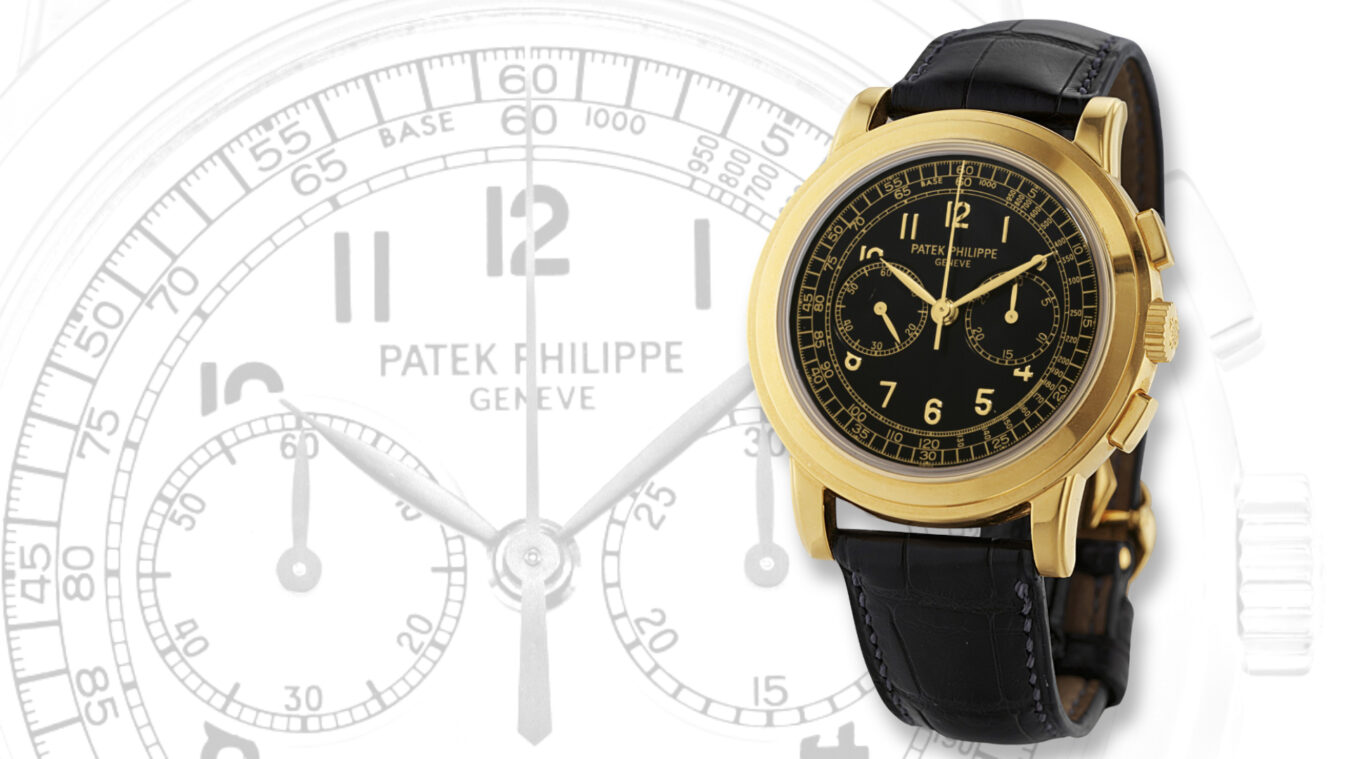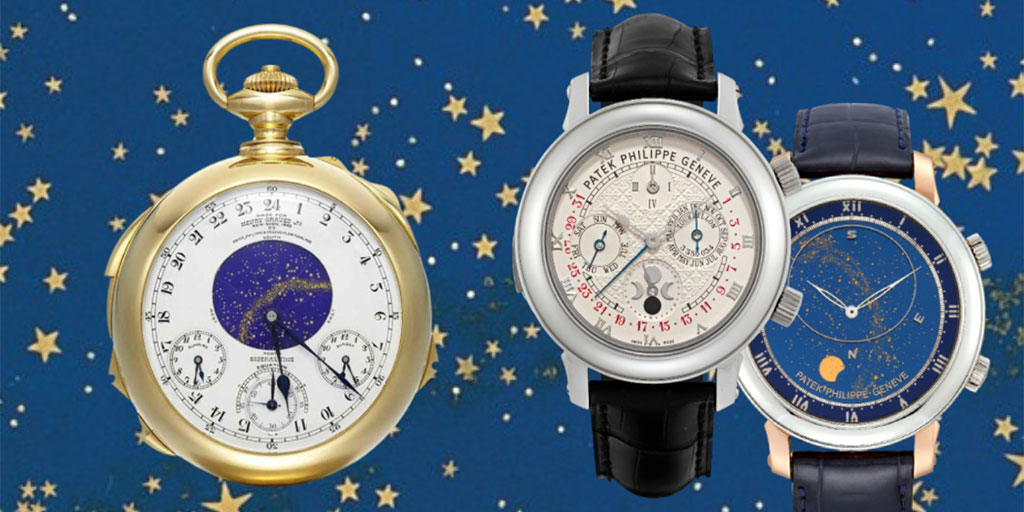Last May 2019, a skeleton Patek Philippe pocket watch brought over 825,000 USD at auction. This exceptional result for an equally exceptional watch has energized interest in the skeleton watches from Patek Philippe. This is the first of a two-part series on skeleton watches, the first being wristwatches, and the second on pocket watches.
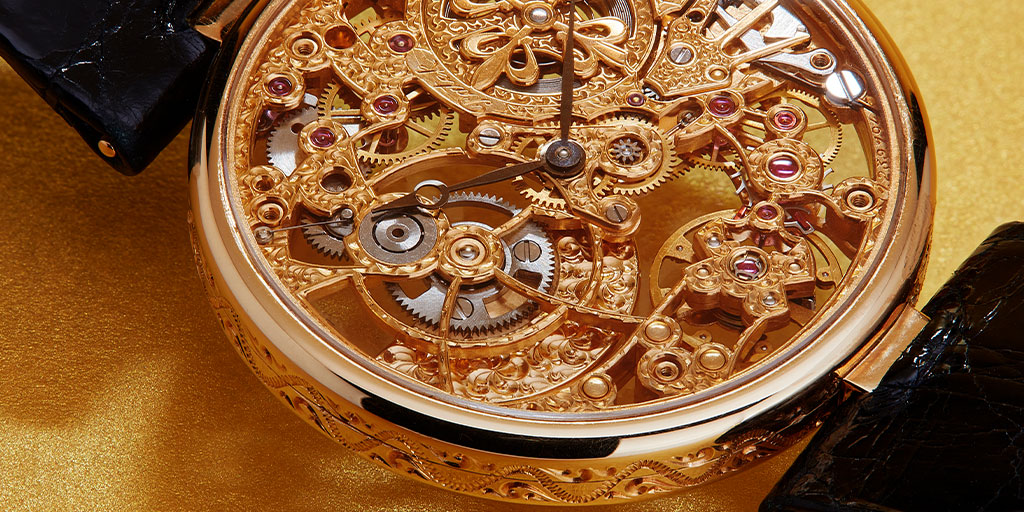
Patek Philippe skeleton watches are the ultimate form of transparency in watchmaking — there is nothing to hide! Every component that can be made from gold is gold. Every square millimeter is cut and decorated by hand. Even the escapement is presented in an aesthetically pleasing way. With a traditional Patek Philippe movement, typically only the watchmaker can enjoy the hidden pleasure of hand finished parts, especially in solid back watches. With a skeleton timepiece, everything is on view. So, grab a loupe and let’s start taking a closer look at these very special Patek Philippe wristwatches.

The tradition of skeletonizing Patek Philippe movements goes back to the 1860s when Patek produced a small series of skeleton pocket watches. These pieces were often made for exhibitions and display purposes so that Patek Philippe could showcase their high degree of finish. It was not until the late 1970s that skeleton pocket watches were added back into the line with references such as the 894. Launched in 1978, the ref. 894 utilized a caliber 17-170 and the bridges were made out of 14k gold (for strength) and featured a hand-engraved Patek Philippe signature and movement number. Every possible part of the gold bridges was fully engraved by hand. The 18k case held the structure in place and only the setting mechanism, mainspring, and parts of the escapement were made of steel. The mastery of the art of engraving is shown in full force within these miniature works of art.
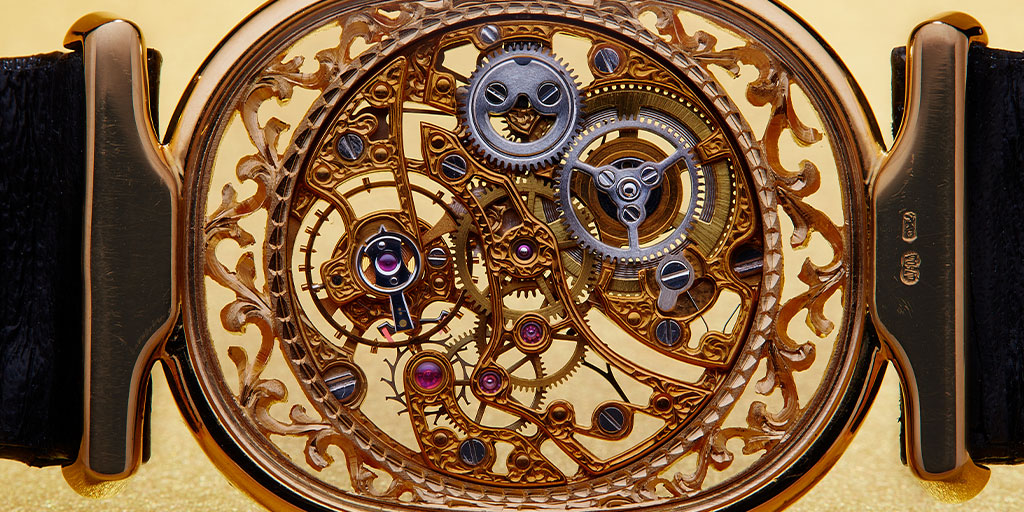
Starting in 1980, the skeleton ‘movement’ within Patek Philippe crossed over to wristwatches and, of course, the Ellipse was the watch of choice to first test the concept of wearing a skeleton on the wrist. The earliest versions of the ref. 3880 released in 1980 were made in the Ellipse form attached to a full lug allowing for a typical 18 mm strap to be used. Later versions of the ref. 3880 quickly transitioned to t-bar lugs that could accommodate cut-out straps. In 1980, the ref. 3880 retailed for 8,800 USD. It is worth noting that during this time a ref. 2499/100 perpetual chronograph had a retail price of 13,500 USD. Only a handful of these skeletonized watches could be made annually and it is believed that only a few hundred were produced from the entire production run from 1980 to the late 1990s. Today, less than 30 examples of the ref. 3880 are known to exist and only two of the early examples that accommodate full straps are known to exist.
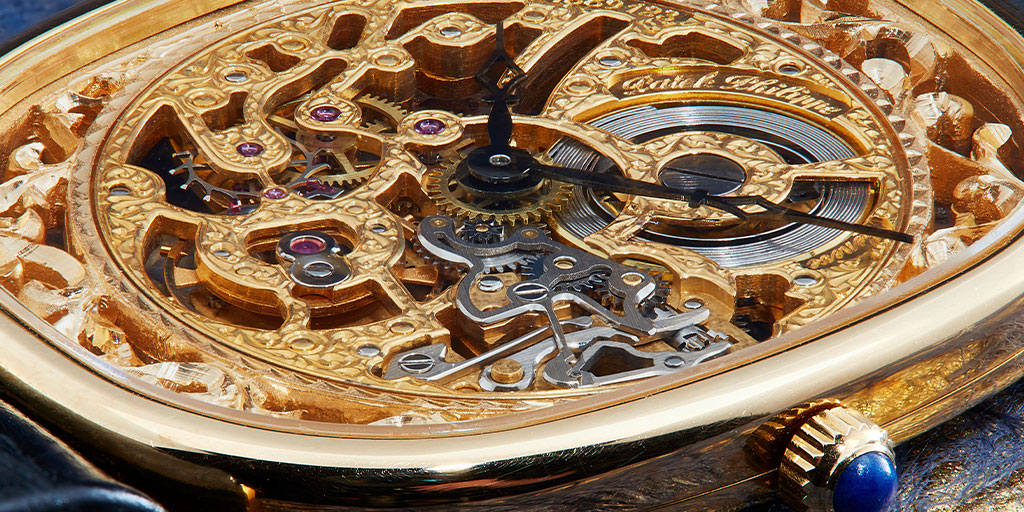
It is interesting to see that the caliber 177 was chosen to decorate the ref. 3880. It was the standard workhorse caliber of the Ellipse manual line at the time. Upon close inspection of the watch you can see that the circular movement has a framework that sets it within the elliptical shape. These 14k supports are some of the most attractive elements of the ref. 3880, each and every example is slightly different. The closer one looks at and compares the ref. 3880s, the individual differences become quite clear. On every watch the Patek Philippe logo is placed in a slightly different location; the same is true with the movement number position which is based on the personal choices and artistry of the engraver. Even the art of the stone setter is showcased with these watches: each crown is elegantly set with a cabochon precious stone.
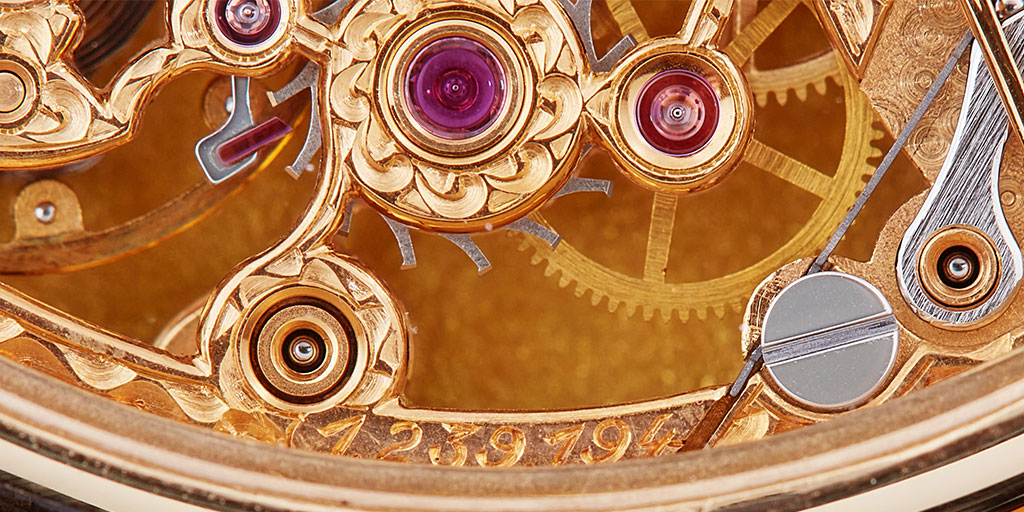
Sadly, many of the names of those associated with the engraving and skeletonizing of these movements is lost to history. However, in the world of engraving, the name Monsieur Thibert resonates as the best of the best. Christian Thibert is often described as one the greatest living engravers. He helped build the tradition of skeleton watches at Patek Philippe and later worked for Vacheron Constantin as head of the Métiers d’Art Departement. In this video from 2014, Christian Thibert presents his art eloquently. Today, Christian Thibert is working independently.
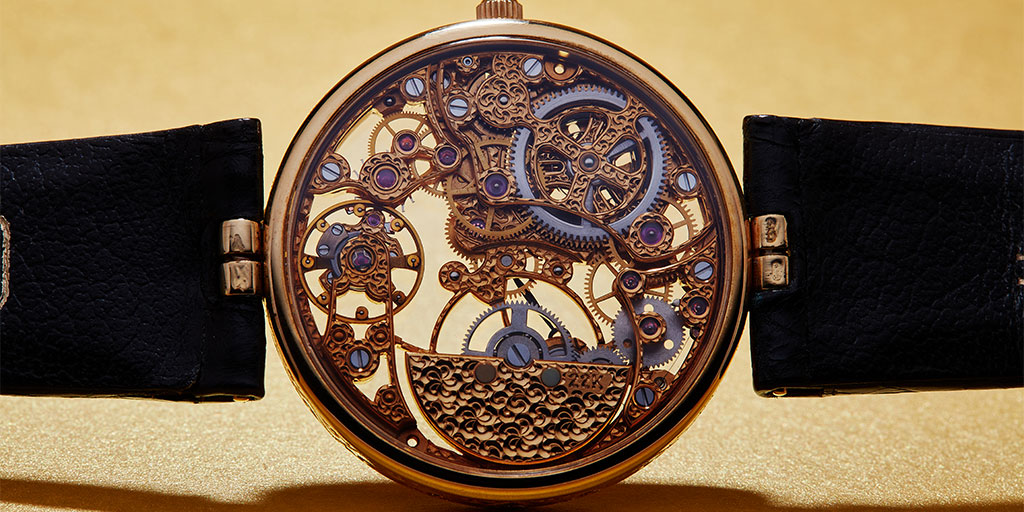
In 1981, the first self-winding skeleton watch was introduced at Basel, the famous ref. 3878. Made with a skeletonized automatic caliber 24o, every part of the movement that can be decorated is hand engraved including the rotor, presenting an attractive kinetic sculpture of Swiss craftsmanship. Each example of this reference is individually different and showcases the art of engraving in its fullest glory. Approximately 60 examples of this reference are known to exist. With a 48-hour power reserve, the caliber 240 is the ultimate canvas for the art of skeletonization.
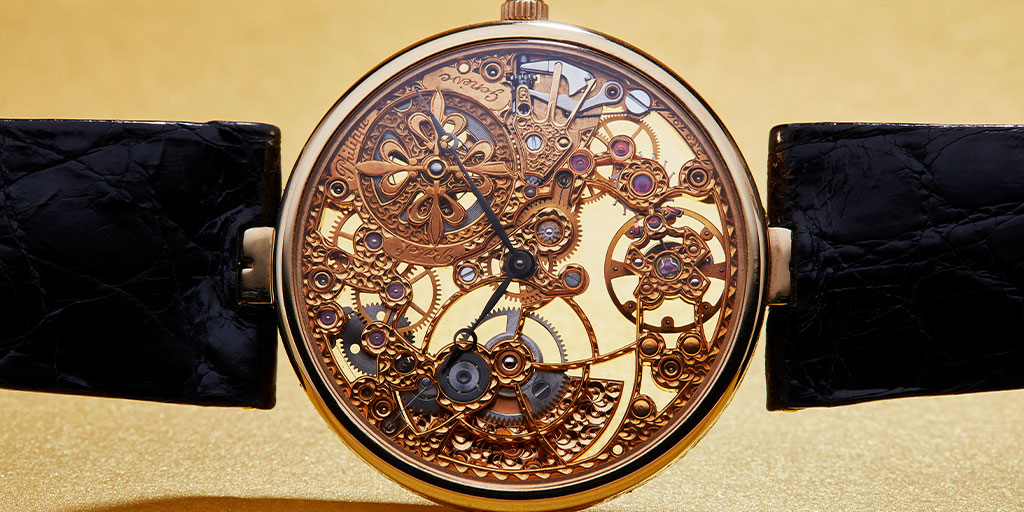
In addition to the refs. 3880 and 3878, there were six additional skeleton Patek Philippe references available in the 1980s and 1990s. These were all variants of the same models with differences in case shape, diamonds, bracelets etc. Please see below a list of these other skeletonized wristwatches and links to examples that have sold at auction:
Ref. 3878 – automatic
Ref. 3880 – first in series
Ref. 3880 with full lugs
Ref. 3881 with diamonds
Ref. 3881 with diamonds and bracelet
Ref. 3883 – round manual
Ref. 3884 – round with diamonds
Ref. 3885 – enamel with diamonds
Ref. 3886 – golden circle
Ref. 3887 – golden circle with diamonds and bracelet
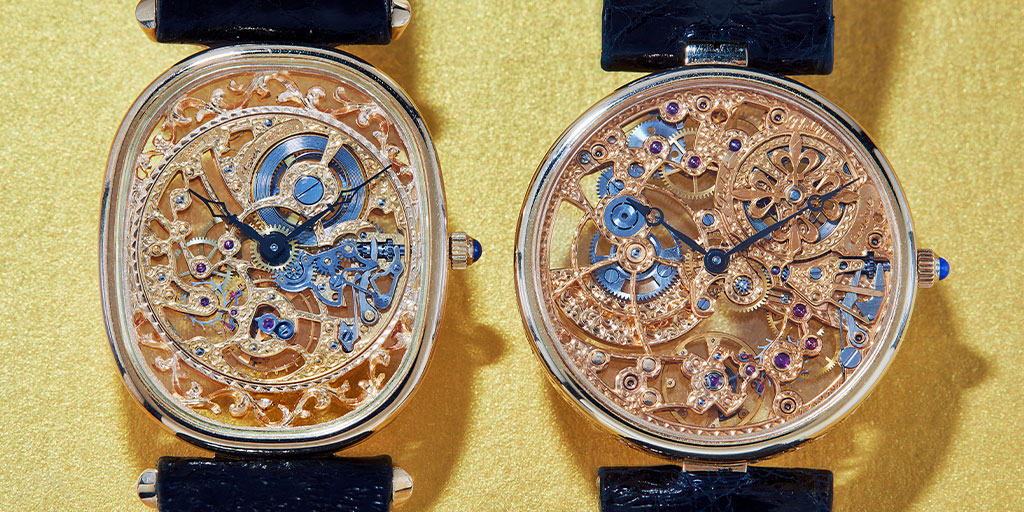
After the ref. 3878 was discontinued in 1998, there was nearly a cease in Patek Philippe’s skeleton production until the introduction of the ref. 5104 in 2007. Patek Philippe boldly reintroduced skeleton watches to its offering with the ref. 5104, the first time a Grand Complication Patek was crafted with a skeleton movement. As the first ‘transparent’ complicated model, it boldly showcased the an automatic minute repeating skeletonized perpetual calendar. Based on the caliber R27 PS QR, this 43 mm watch was only made in small numbers and available through the boutiques for approximately 600,000 USD.
Ref. 5104 – Grand Complication
In 2008, a new skeleton reference was introduced at a much lower price point. The time only ref. 5180/1G was announced at Basel and offered for approximately 80,000 USD retail. This new reference also utilized the caliber 240 but this time is was held within a sector form framework to allow the overall size of the watch to increase from 31 mm to 39 mm. This more modern design was complemented by an attached white gold bracelet. It is interesting to note that the early examples of the ref. 5180/1G were made with sapphire crystals that were tinted blue, and later examples were clear sapphire crystal. In 2017, the ref. 5180/1R was introduced in a pink gold version. In 2011, a ladies skeleton watch, ref. 7180/1R was released by Patek Philippe for the first time. This 31 mm diameter watch uses the caliber 177 as the base, an homage to the ref. 3880 from the previous generations of manual skeletons.
Ref. 5180 – white gold skeleton bracelet
As with all things Patek Philippe, the story of their skeleton watches meshes past, present, and future. We will surely see more skeleton watches in the future and new innovations are always on the horizon. However, the earliest examples of Patek Philippe skeleton wristwatch will always be coveted. The quality of these early examples will be the high benchmark to which new offerings will be compared. So, take out a loupe, or use the magnification on your computer, to compare past and present. You will surely be impressed and appreciate the art and brilliant creativity of the engraver.
To see the ref. 3880 featured in the photography above please look here, and for a ref. 3878 please look here.
Thank you to Atom Moore for his brilliant photography. (www.atommoore.com)

